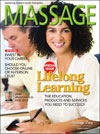Personal Responsibility and Being Reiki: our discussion continues
There is no disputing that Hawayo Takata capably brought teachings across to the USA from Japan. What exactly were these teachings and what was her influence upon them? And lastly, did these teachings focus on non-duality in any guise?
Firstly, were these teachings those of Mikao Usui? In part, yes. Though teachers in Japan, like Hyakuten Inamoto, believe that what Takata taught might better be called Hayashi's Reiki. Chujiro Hayashi, you might well say, 'revolutionised' the teachings – bringing them into a more treatment based arena in accordance with his own interests and education. Whether this practice of Hayashi focussed on non-duality it is unknown. It is known that he moved away from the early Reiki society, the Usui Reiki Ryoho Gakkai, and focussed on his own unique Reiki teachings which included treating people at a formal clinic. Today many also believe that he is the author of the more medicalised treatment manuals that exist from those early days. This supports the understanding that his direction was new and different to that of his teacher.
To gain a clearer idea of what some of the differences were between Hayashi's teachings and those of Usui we can listen to Takata. A student of hers, John Harvey Gray, wrote a book called Hand to Hand which includes information about the tapes he holds of Takata teaching. He writes that in the tapes she speaks of a trip she took back to Japan where she met with Japanese Reiki practitioners. What they practiced, she explained, "was highly complex, required years of training and was closely intertwined with religious practices". She had never said this of Hayashi's teachings and her response to these "Japanese citizens" she met indicates that the practices she had witnessed were different to what she had known. John Harvey Gray also writes that Takata often claimed to have "simplified" the teachings. This tells us two things: Usui's teachings were different from what she had initially studied and that she had taken Hayashi's teachings and simplified them further.
Did Takata, then, teach the concept of non-duality or even understand it's implicitness within the system? There are no known records of Takata talking or writing specifically about non-duality. As Pamela stated last week, a major reason for Takata to have simplified the teachings may have been that she felt constrained by the negative cultural sentiments that existed in her lifetime due to the Second World War. This may have initially posed an issue, yet this reasoning loses weight when faced with the records of other spiritual teachers in the West during the mid 1900s teaching Asian oriented concepts such as non-duality. These were popular teachers like Thomas Merton (1915-1968) and the French philosopher Omraam Mikhael Aivanhov (1900-1986). Even Zen master Shunryu Suzuki was teaching in the USA from 1959 till 1971. So there was definitely interest in non-duality and meditation during this era.
In modern times, non-duality and Oneness have become household names with numerous websites devoted solely to these subjects. In this process they appear to have become mere terms and, consequently, oversimplified. It is understood that true non-duality is where you reach a space of directly experiencing the universe as it is, or, as it is said in many Eastern philosophies, you have a direct experience of emptiness. To know this experientially takes many, many years of dedication and personal practice, perhaps a lifetime for some – or longer if that is possible.
No matter which spiritual practice it is that we are discussing, spiritual practices have always included large doses of meditation. Therefore, it is understandable that the system of Reiki in Japan traditionally included meditations such as hatsurei ho as one of its foundation practices.
Through research we have pinpointed 5 main elements that form the system of Reiki. They are precepts, hands-on healing, symbols and mantras, meditations/techniques, and attunements/reiju. It is these elements together that create the system which ultimately supports its practitioners to move into that space of Oneness or non-duality... after many, many years of dedication and personal practice – and then to move on to help others if they so wish.
On reflection, the hands-on healing element of the system may initially have been only for use on others, evolving from the physical ritual of attunement/reiju. There are correlations, for example, between the hand positions of the reiju and Hayashi's head positions in his manual. Healing with the hands was popular amongt the naval officers (of which Hayashi was one) as an alternate form of 'first aid' and was taught to them as such. The meditative practices on the other hand were very clearly utilised for spiritual self-development. Kaiji Tomita, a student of Usui, taught in his 1933 book of a 5-day plan. This appeared to be his foundation practise and its aim was to unify and purify the mind. The practise was simply hatsurei ho and Japanese waka practised everyday for ½ an hour over 5 days. It was this practice that then enabled the practitioner to go and help others with hands-on healing.
It is, therefore, possible to see that the element of hands-on healing is not a major self-practise technique, but, rather, something that a Reiki practitioner can do to help others after working on oneself with traditional Japanese Reiki meditation practices. This is not to say that hands-on healing for the self is is not beneficial. It has come to be a tool which you can use to support your own healing practice in the same way that you would help others. But to go deeper into your own spiritual practice and to sustain your healing practice, other elements of the system of Reiki were provided. It is the meditation practices coupled with the system's other elements of precept work, symbol and mantra work at Level II and III, and the attunement/reiju that develop the practitioner's growth toward non-duality.
All this talk of Oneness and non-duality still hasn't addressed the issue as to why it is so important that a Reiki practitioner/teacher work with the system's elements to reach this space. When a Reiki practitioner/teacher reaches a non-dual space, then he/she realizes that the 'I' has disappeared. It is at this stage that he/she also realizes that there is no giver, receiver or gift during an attunement/reiju or Reiki treatment.
At this moment in time, you, the practitioner or teacher, are at your most compassionate as you expect nothing for yourself from the practice.
And it is compassion (as described in the Reiki precepts) that grows through the practice of the system of Reiki. If compassion is not a result of the teachings, then we are not practicing the teachings properly. As in all spiritual practices, non-duality and compassion can be found to be holding hands, gently supporting each other with pure love.
We have written some articles on these subjects which you might find interesting including:
It's Raining Rei
Breaking the Reiki Code
Christ prayed that all men might become One as He was one with His Father, in the Unity of the Holy Spirit. Therefore when you and I become what we are really meant to be, we will discover not only that we love one another perfectly but that we are both living in Christ and Christ in us, and we are all one Christ. (Thomas Merton)
Cheers,
Frans and Bronwen Stiene of the International House of Reiki
































1 Comments:
I too wanted to respond when I saw the tangent the dialogue took in the other post, but was concerned about continuing a polarizing conversation which doesn't serve Reiki well. However, since the cat's out of the bag...
I feel like 'medical' Reiki has been greatly advanced by someone like Pamela & this is a very good thing. She has carved out a special place in the interface of these two worlds. I respect that enormously.
I do agree that the evolutionary practices of Reiki are integral to its hands-on practice, and that without these practices hands-on Reiki is untethered.
I also feel that only the hands-on practice of Reiki isn't sufficient for true personal evolution.
As for the historical context...I can understand how right around WWII one might practice caution with a teaching of Japanese origin. What I don't understand is why Takata, who taught into the 70s, didn't bring the West up to speed on the uniquely inner & nondual practice of Usui's Reiki.
The answer seems to be that what she received from Hayashi didn't include these teachings.
Takata has a revered place in the history of Reiki. Yet, I'm frustrated by her legacy which is repeated stubbornly in book after book, and website after website, perpetuating core untruths about Reiki & Usui's history.
As for America being exposed to nonduality (apart from the names cited by Bronwen & Frans)...
Wikipedia: The first Japanese temple in Hawaii was built in 1896 near Paauhau by the Honpa Hongwanji branch of Jodo Shinshu. In 1898, Japanese missionaries and immigrants established a Young Men's Buddhist Association, and the Rev. Sōryū Kagahi was dispatched from Japan to be the first Buddhist missionary in Hawaii. The first Japanese Buddhist temple in the continental U.S. was built in San Francisco in 1899.
The American Transcendentalists and associated persons, in particular Henry David Thoreau took an interest in Hindu and Buddhist philosophy. In 1844, The Dial, a small literary publication edited by Thoreau and Ralph Waldo Emerson, published the first English version of a portion of the Lotus Sutra; The poet Walt Whitman also admitted to an influence of Indian religion on his writings.
Perhaps the most significant event in the 19th century history of Buddhism in America was the Parliament of the World's Religions, held in Chicago in 1893. Although most of the delegates to the Parliament were Christians of various denominations, the Buddhist nations of China, Japan, Thailand, and Sri Lanka sent representatives. Buddhist delegates included Soyen Shaku, a Japanese Zen abbott; Zenshiro Noguchi, a Japanese translator. (End Wikipedia.)
This list is long and the story of American Buddhism continues strong to this day.
The Parliament of the World's Religions held in Chicago in 1893, also brought Swami Vivekananda to the States, representing Yoga & Advaita Vedanta, the yogic version of nonduality.
The Yoga tradition was later firmly established in the US by Paramahansa Yogananda, who lived out his years in America, establishing the headquarters of his work in Los Angeles.
As with Buddhism, American Yoga thrives today.
It seems to me that it's high time to stop being a Takata apologist, and take seriously the place Reiki & Usui have in the world's wisdom traditions.
Post a Comment
<< Home